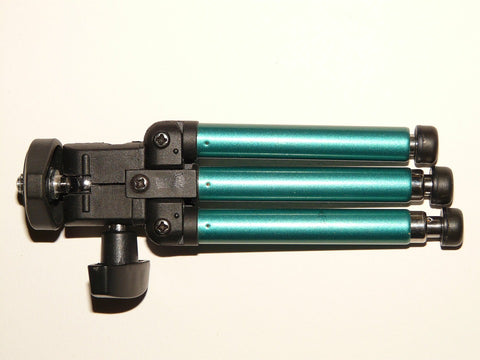Anodizing is a process of enhancing the corrosion-resistant capabilities of metal parts by creating an oxide layer on their surface. This layer is used to provide better surface resistance against corrosion and wear. Anodized metal also offers improved adhesion for glues and paint primers, which creates a handy base for a decorative surface.

(Pixabay / Hans)
Anodic films are most commonly used to secure aluminum alloys but may also be applied on other non-ferrous metals like tantalum, niobium, zinc, titanium and magnesium. In the case of aluminum, the oxide is not applied to the metal’s surface like plating or paint but is completely incorporated into the underlying surface so it cannot peel or chip.
Anodizing first became widespread in the late 1920s as a way to protect aluminum parts from corrosion. Since then, it has not only been used to enhance corrosion resistance but also for dyeing and improving wear resistance of the ductile metal.
How Is Anodizing Performed?
Anodizing is basically an electrochemical process where the user takes a metal alloy and submerges it in an electrolytic solution tank combined with a cathode. After a current has passed through the solution, the cathode releases hydrogen, and oxygen starts covering the anode’s surface. This leads to a metal oxide film developing on the surface of the part being anodized. Based on the application, the oxide layer can be expanded to a great extent.
Layers added to aluminum parts, for instance, can be made 50-100 times as thick as the layer that would naturally form on aluminum components that are only exposed to oxygen. Aluminum alloys that are exposed to marine settings typically benefit from anodizing. Oil rig structures, dock parts, and ship hulls are a few examples of these.
Anodized aluminum alloy is more wear and corrosion-resistant than non-anodized alloys. They also secure the metal against galling, which is wear and tear from two parts of threaded components rubbing together. In a nutshell, anodized parts are much more durable than non-treated ones.
Different methods of anodizing are commonly categorized by the kind of electrolytic solution bath used. The first anodizing commercial processes utilized chromic acid, which is referred to as Type 1. However, today’s anodizing facilities make use of sulfuric acids. This method is known as Type 2 or Type 3, depending on the exact method used.
Metal parts can also be dyed as they undergo the anodizing process. This is usually done to create luxurious finishes with a deep hue that can be only matched through paint. Some examples of colorful hues include green, blue, red, black and gold.
After the parts are dyed or submerged in the electrolyte bath, they are sealed per the buyers’ requirements or specification. This causes any open pores to shut down and prevent the absorption of the unwanted dye. Anodized surfaces also offer enhanced adhesion beneath coatings like Solid Film Lubricant for optimal stability and endurance.
The Benefits of Anodizing
Anodizing offers remarkable attributes to aluminum finishes, such as:
-
Aesthetics: The process can emphasize the metallic elegance of aluminum. For example, an increasing number of color and gloss alternatives are offered while color variations are either eliminated or minimized.
-
Durability: The majority of anodized parts have a long life span and provide economic gains because they don’t have to be maintained or replaced as often. They’re also ideal for use in strained conditions. Additionally, anodizing results in a reacted finish that can be incorporated into the underlying aluminum for unmatched bonding and adhesion.
-
Ease of maintenance: Courtesy of the aforementioned durability traits, maintenance of anodized alloys requires minimal effort. You can wash them in mild soap and water and rinse to restore the anodized profile of the metal part to its original look. Challenging deposits can be treated via mild abrasive cleaners.
-
Color Stability: The exterior of anodized surfaces offers good protection against ultraviolet rays, provides long-term color preservation, and is shielded considerably from the contaminants present in the environment.
-
Safety and Health: The process of anodizing does not have any adverse impact on human health. Because the anodized finish is “chemically stable,” it is non-toxic and heat-resistant. Also, when you analyze materials like aluminum that are recyclable, you will not compromise these Earth-friendly properties.
- Guaranteed quality: Anodizing is a process of strict standards and high precision, so the majority of people who specialize in this process tend to adopt only the best practices and procedures available. This will help you conform to all safety and environmental policies, whether you’re planning to buy anodized metals for resale or to use in a specific industry.
Conclusion
By now, you should have a good idea of how metal parts are anodized, and you can tap into the benefits of the process with aluminum or titanium products or product parts. By anodizing the surfaces of metals, you’ll be able to increase their corrosion resistance.
Did you know that anodized aluminum was used in the Sears Tower in Chicago, Illinois? Or that it revolutionized the construction of exhibit displays, building materials, and computer hardware? Indeed, anodizing has far-reaching benefits that have helped to make anodized aluminum one of the most respected materials in use today.
Anodizing aluminum is the go-to solution whenever you need metal prototypes and parts that have superior mechanical properties. The process layers oxide on the metal part resulting in an increased corrosion resistance enhanced visual qualities, a surface that cannot be scratched. If you are still unconvinced about anodizing, here are 6 reasons why you should do it.
![6 Reasons You Should be Anodizing [infographic] 6 Reasons You Should be Anodizing [infographic]](http://cdn.shopify.com/s/files/1/1344/1717/files/6-Reasons-You-Should-Be-Anodizing.jpg)
